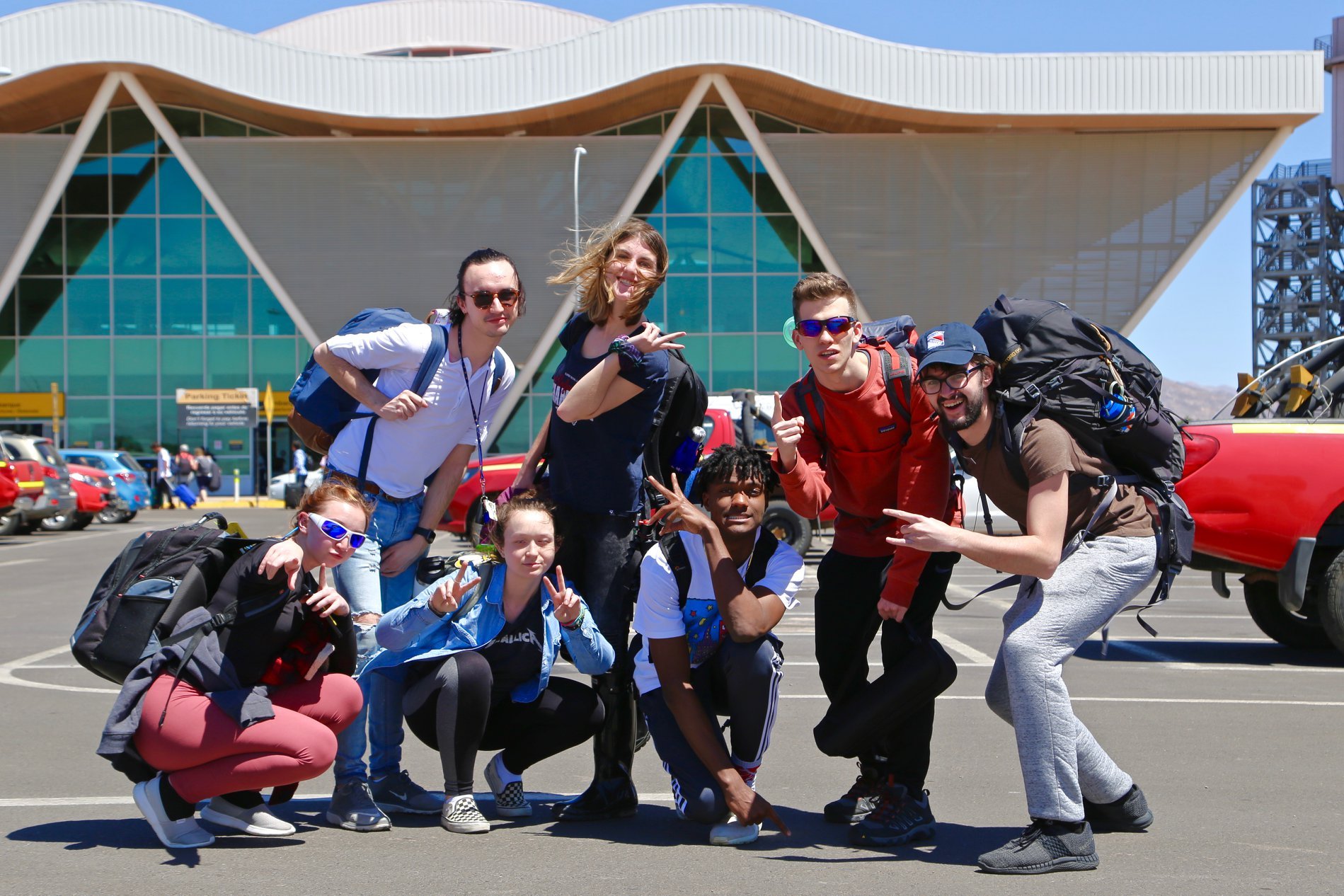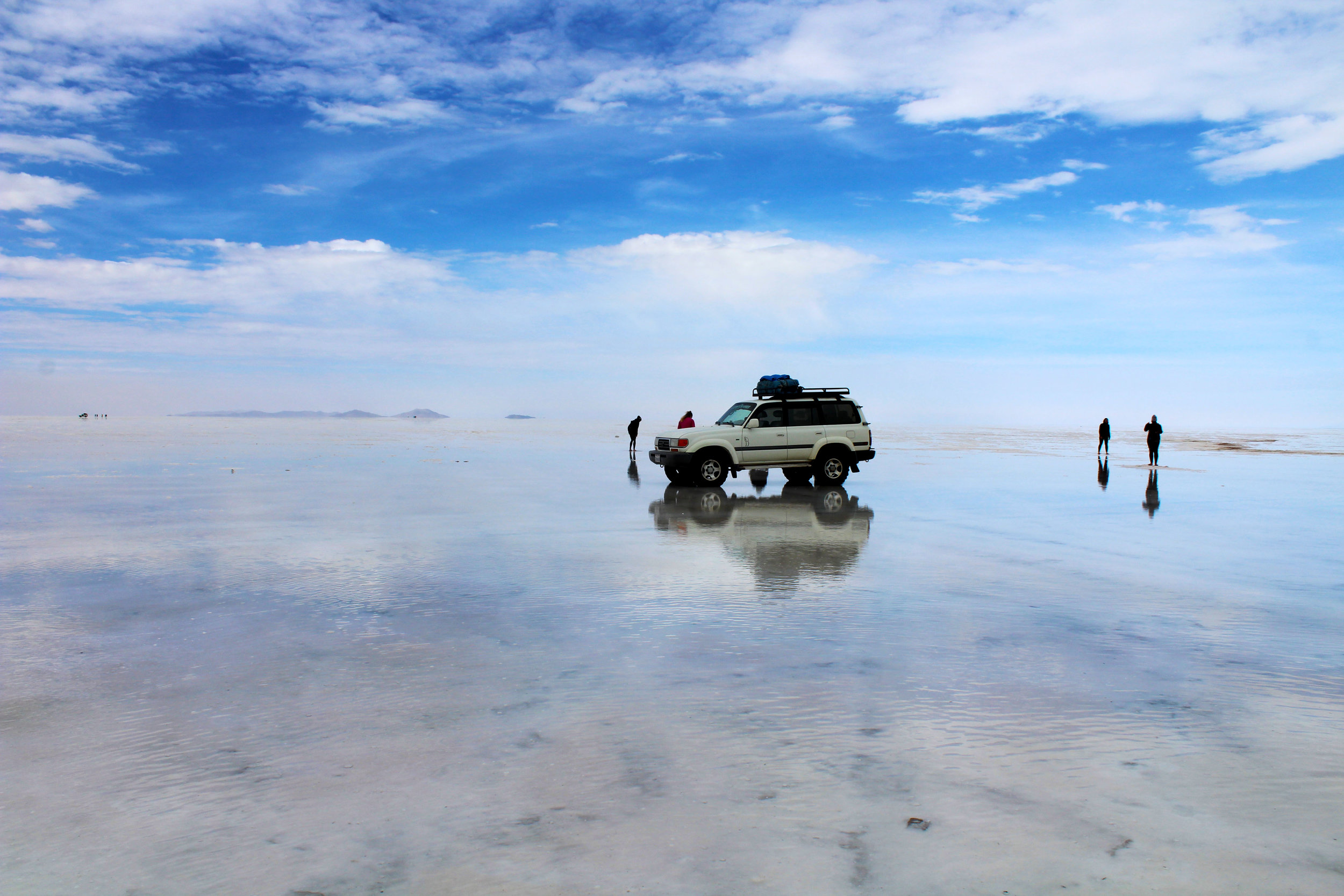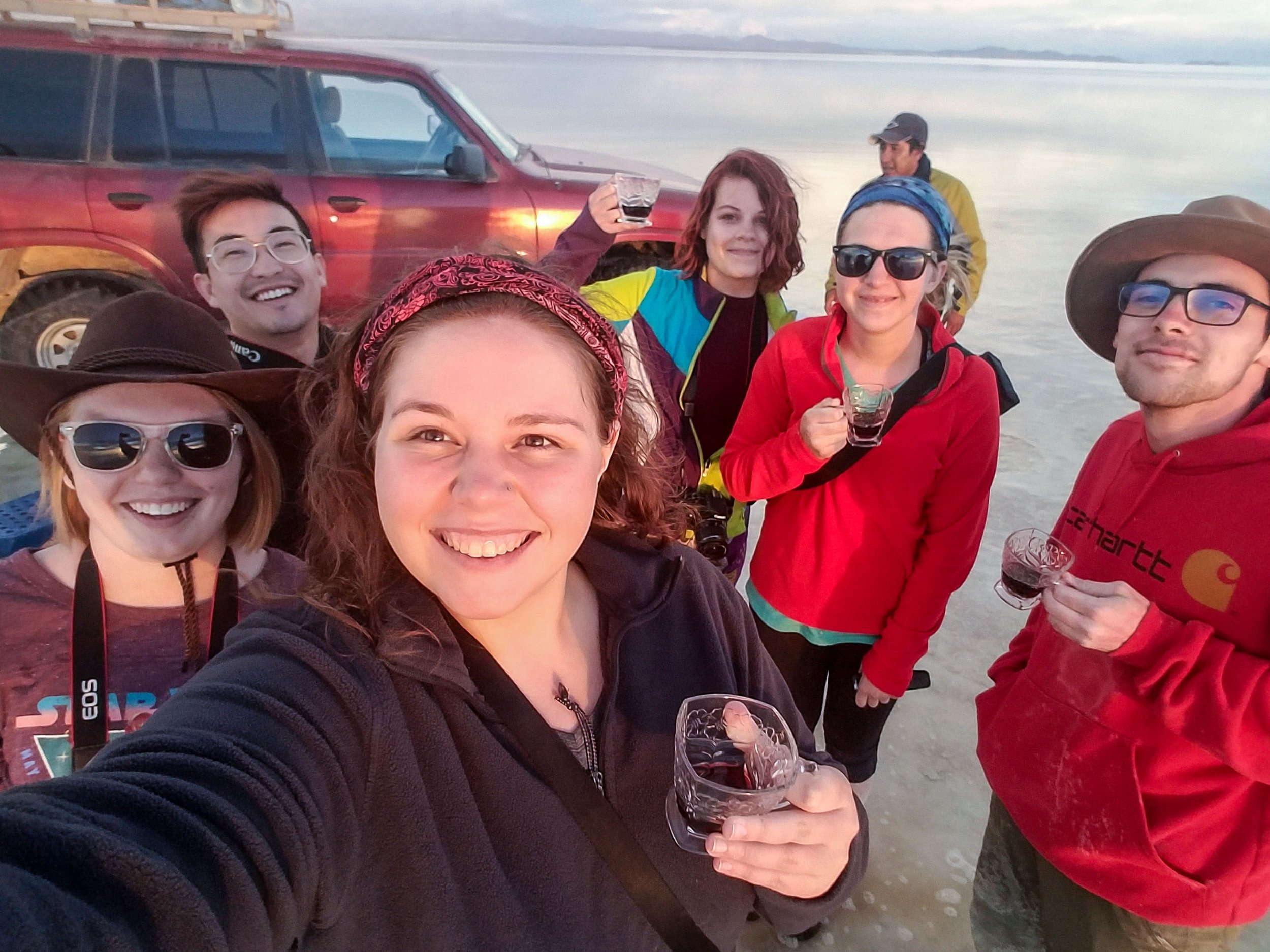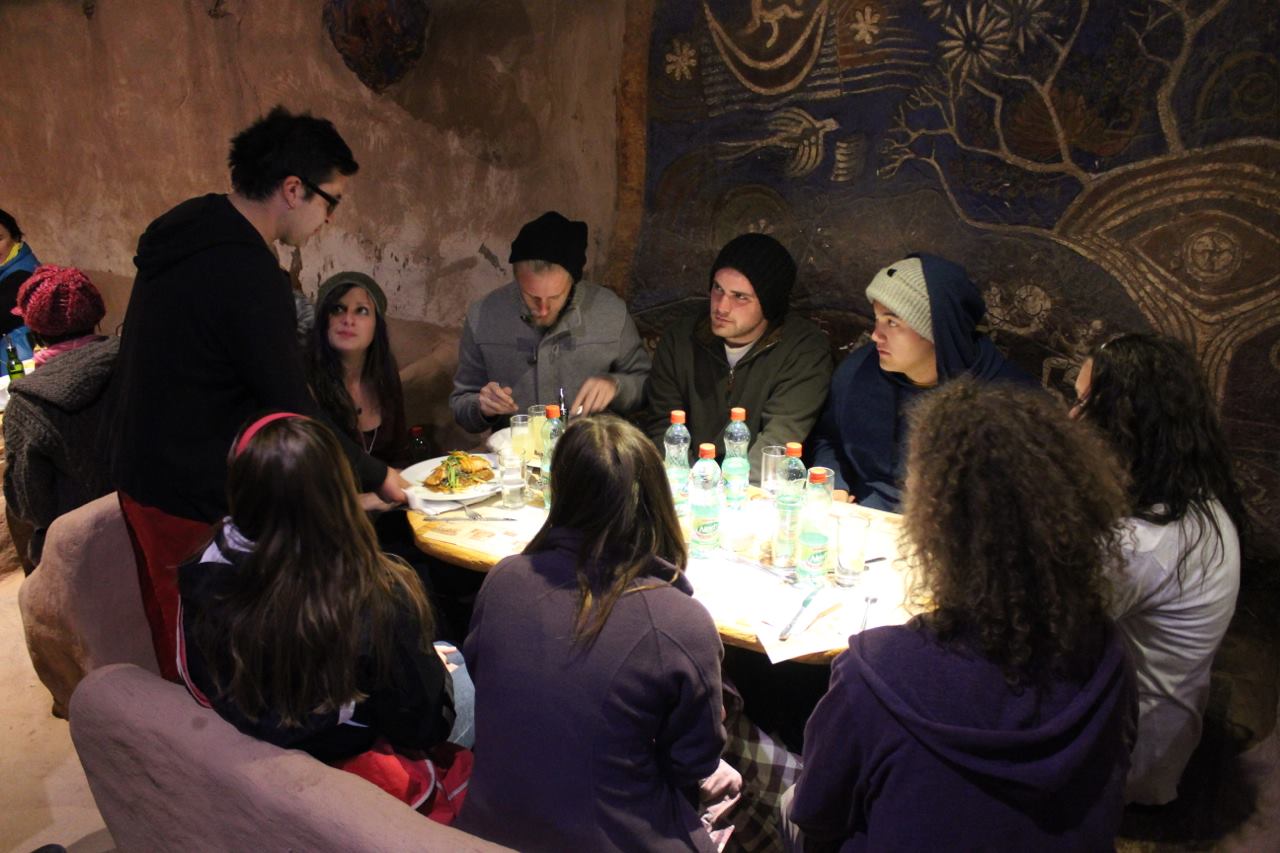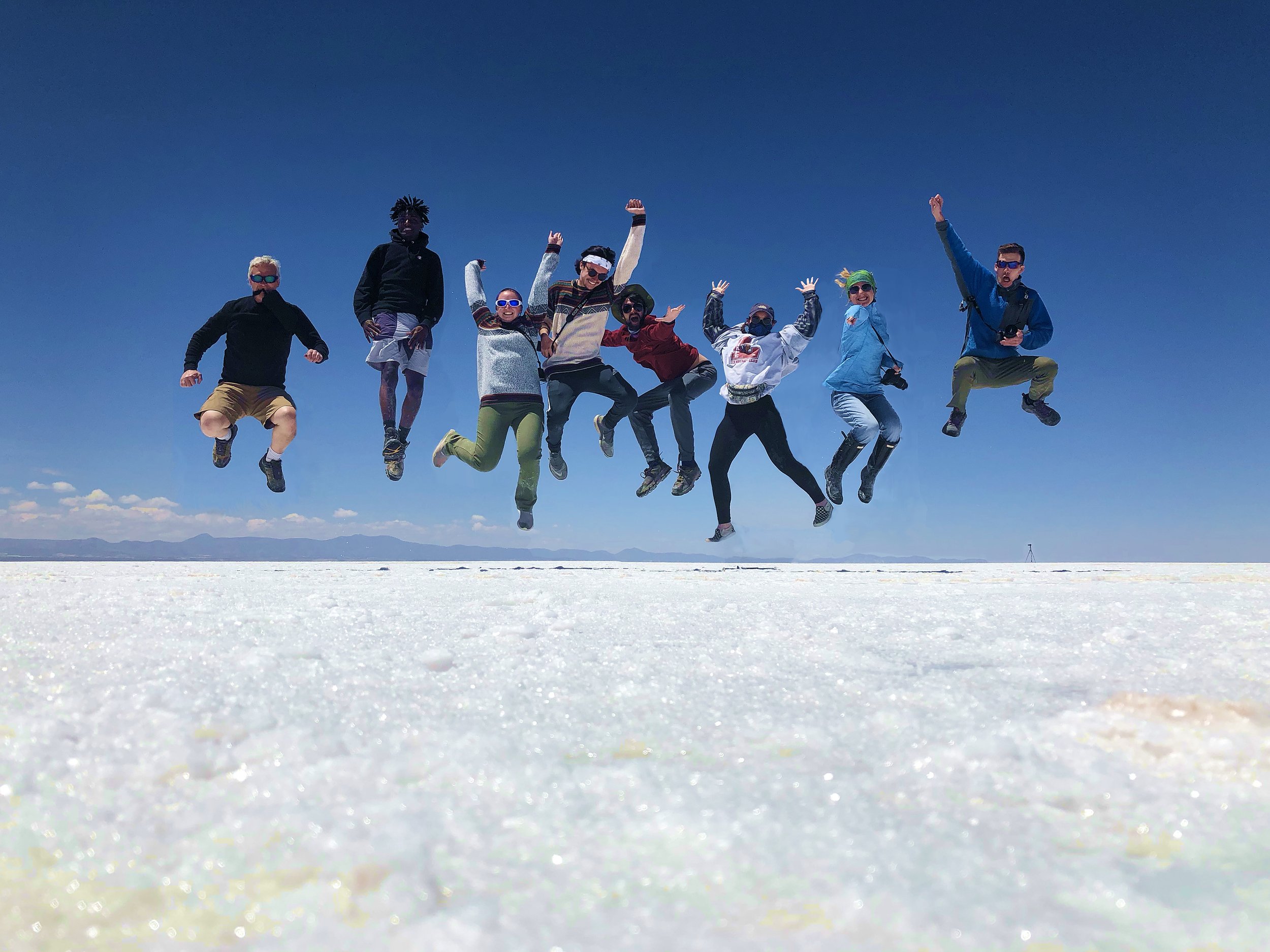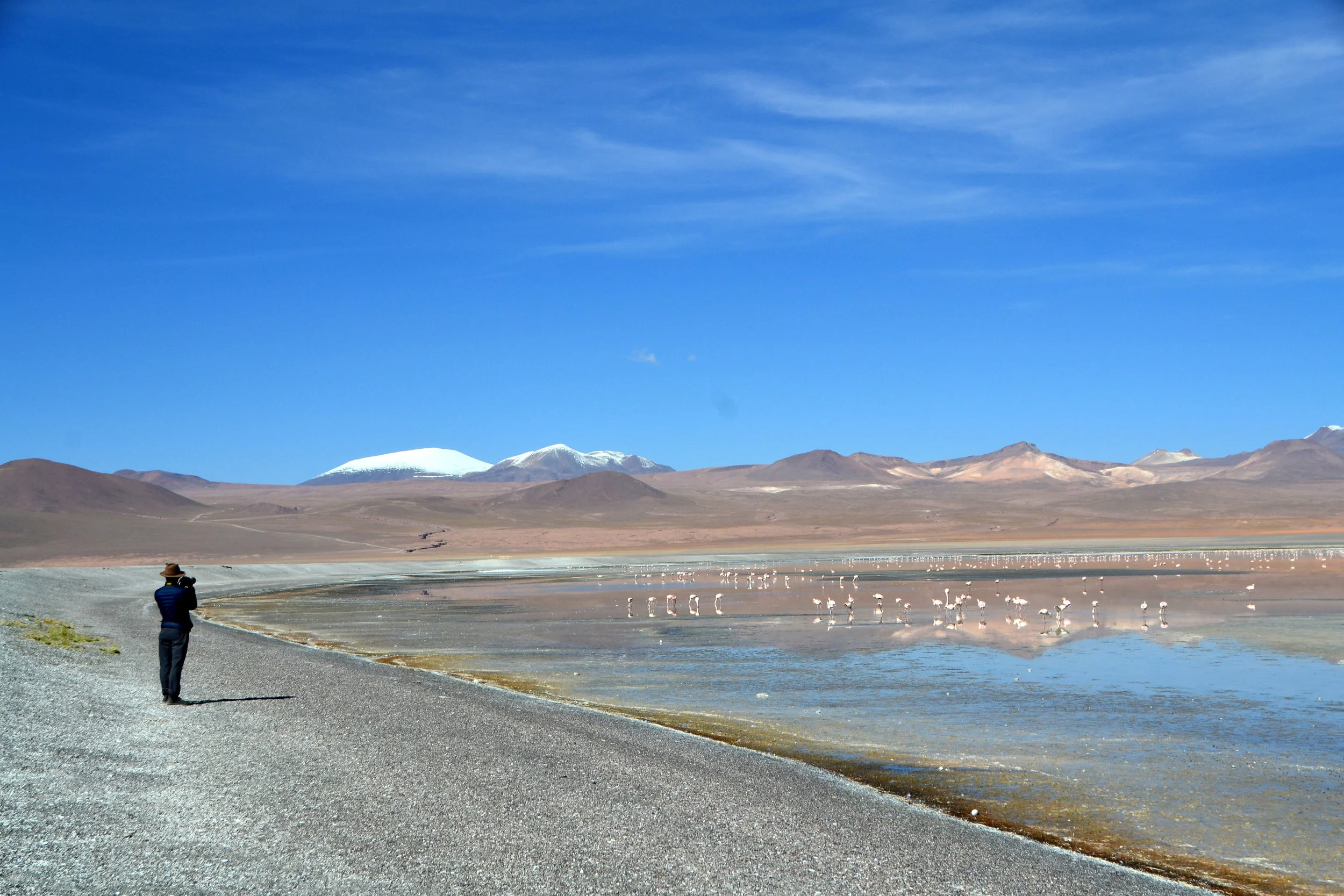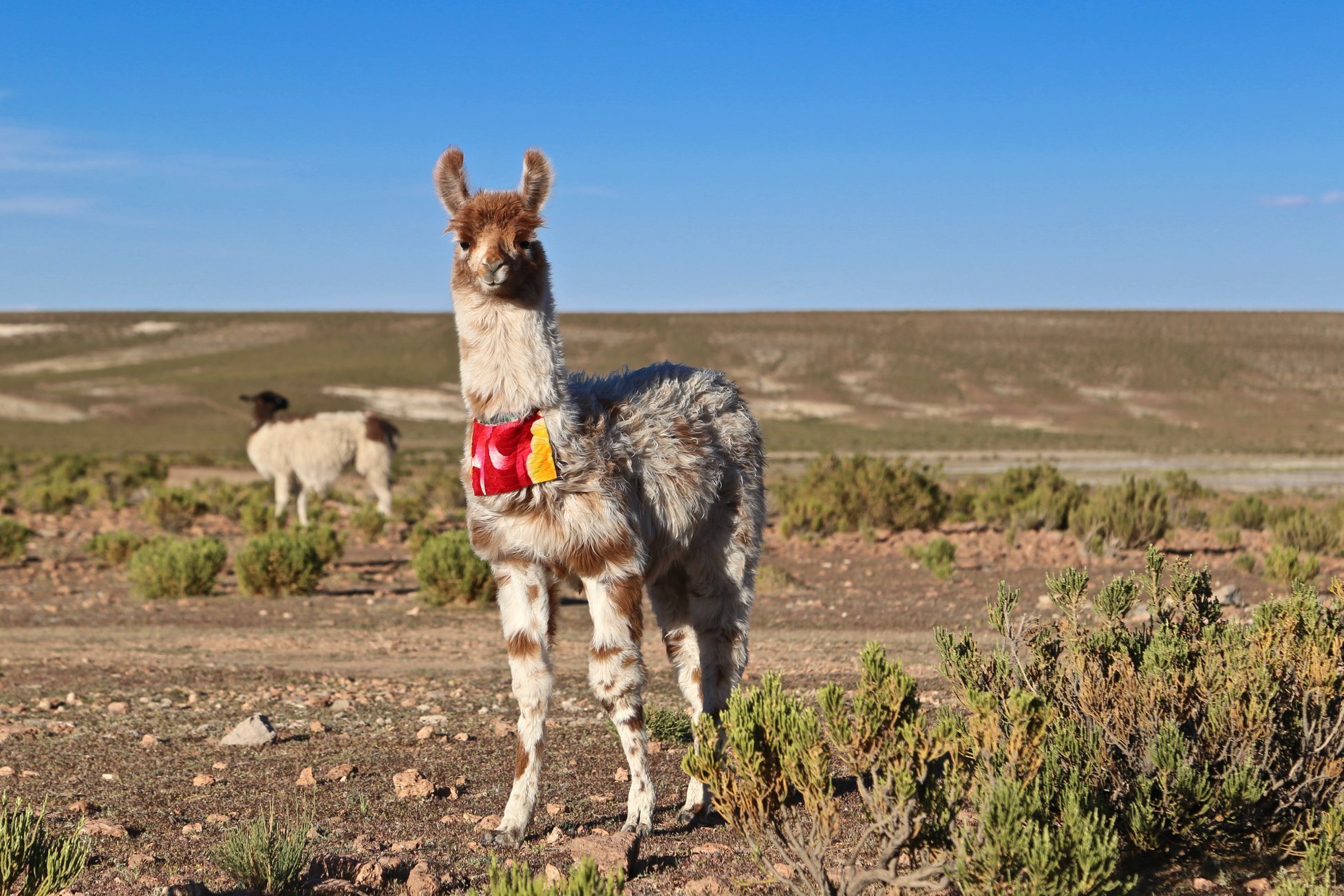Course Info
Space Atacama Chile: Exploring Art, Culture, and the Environment in the high Andean Desert
—
““The time in Atacama Chile is a powerful experience that allowed me to learn about a new culture while reflecting on my own art making practice. A definite must while you are at WVU!””
Course Overview
Space: Atacama Chile is a WVU School of Art and Design adventure art course in the Time-Based Art program. It that takes students to the remote and magical Atacama Desert of northern Chile for 13 days in May to investigate themes of perception, space, and the environment. During the first 3 weeks of the course we will meet twice weekly via zoom and in person in the Canady Creative Arts Center. During this time participants learn basic animation and video techniques in relation to the landscape through a series of online meetings and remote assignments. We’ll also learn a little about the history, politics and cultural backdrop of Chile and the Atacama region.
Then at the end of the 3rd week of May we’ll travel to the high altitude Atacama Desert of northern Chile. Over the next 8 days we’ll take daily hikes and expeditions into the amazing and otherworldly landscape surrounding the remote desert town of San Pedro de Atacama and the Chilean Altiplano. We’ll wander through pre-Columbian ruins, ponder mysterious desert petroglyphs, hike across ancient lunar-like landscapes and to the top of a nearby high-altitude volcano. We’ll marvel at Atacama’s impossibly vast and clear night's sky, which makes it home to some of the worlds’ most important telescopes. We’ll also learn about the flora & fauna of the Atacama and its unique geology. Before returning to the US, we’ll visit the capital city of Santiago and the famed port city of Valparaíso, and spend a couple of days on the Chilean coast. Throughout our trip we’ll document our experiences, gathering data and information for a final multimedia art project that you’ll create upon return to the U.S. inspired by our experience of Chile and the Atacama.
The ultimate aim of the course is to inspire students through a reawakening of the mind and the senses in front of this sublime landscape, and through exposure to the fascinating culture and history of the Atacama desert, Chile and its people.
Space Atacama Chile is open to both art majors and non-art majors alike. There are no prerequisites; any student can sign up. Non-art students and students with little technical experience are encouraged to apply. The skills needed to complete the final project are learned during the course.
““This is by far one of the most memorable experiences of my life so far and I couldn’t be more happy to have been presented with an opportunity like this. Thank you for making this happen and I hope you can continue to pass this unforgettable experience onto many more generations of students.””
Program Leader
Space Atacama Chile is led by Associate Professor Gerald Habarth, who is the coordinator of the Digital Art and Animation area in WVU’s School of Art and Design. He visited Chile often as a youth and later lived there from 1992 – 2000 after graduating from college. He has traveled to the Atacama region of Chile and to the Altiplano portions of Bolivia and Peru many times.
Travel to chile
On May 24, 2024 we begin our travel to northern Chile, flying first to the capital city of Santiago, and on the following day, continuing on to the northern mining town of Calama. From Calama we head south by bus arriving about an hour later in the small desert town of San Pedro de Atacama, renowned for its quaint and rustic beauty as well as its unique and eclectic population of travelers, mountaineers, artists, musicians and the locals who call the desert their home.
Each morning for the next eight days we’ll pack-up the camcorders and digital cameras and head out on daily excursions into the surrounding mountains and valleys. In the evenings, as we unwind by a fireside dinner, we’ll gather together again to reflect on the day's experiences, discussing our insights and thoughts about the day’s journey. We’ll trek through the extraordinary Valley of the Moon and the Tara Salt Flat. We’ll sandboard the dunes of the Valley of Death, bathe in thermal hot pools at 12,000 feet, participate in a desert astrophotography workshop and see the stars like you’ve never seen them before. At the end of our Atacama journey, we’ll visit the ALMA observatory, the largest radio telescope in the world. The highlight of this year’s trip is a one-day hike to the top of nearby Cerro Toco (Toco Mountain) an inactive volcano that forms part of the Purico complex, towering above the Atacama salt flat at 18,386 feet.
Surrounded by this timeless landscape, you'll feel the tug of its ancient history as well as the awe of its extreme and surreal landscape. You'll experience the local Andean culture whose roots trace back through the Inca Empire and beyond. In the midst of this dreamlike setting you'll probe the very essence of your experience and talk about the relationships between art, perception, the landscape, technology and culture.
Later we’ll travel south to the historic and colorful coastal town of Valparaíso, a magical port city and UNESCO World Heritage Site nicknamed “The Jewel of the Pacific” and onetime home of Chile’s famed Nobel Award winning poet Pablo Neruda. We’ll then spend two final days in the seaside town of Cachagua, hiking the coastline and cliffs overlooking the Pacific Ocean. We’ll complete our whirlwind trip with a 1-day visit to the capital city of Santiago, visiting several major sites in the city and a studio visit with a local Chilean artist before returning to the U.S. on June 5, 2024.
““Chile - a magical landscape that will change your life.” ”
program dates
May 7: In-person Meeting. Course overview & equipment check-out
May 7 - 23: Biweekly remote meetings and assignments
May 24 - June 5, 2024: Travel to Chile
June 6 - 13: Complete final multi-media creative project
June 13: Final project review & discussion. Course wrap-up
Cost per student: $3800
Includes:
This trip fee INCLUDES ALL course tuition and fees for 4 academic credits. This is equivalent to: $4,804 for Non-Resident students
and $$1,776 for Resident students. (based on tuition + fees for College of Creative Arts tuition rates for 2024).All transportation expenses, including round-trip airfare from U.S. to Chile, and all transportation expenses in Chile - buses and transfers etc.
All lodging expenses (we will stay in hostels in San Pedro de Atacama and in Cachagua).
All curricular equipment needs.
Some meals, including all breakfasts, 2 group lunches and 2 group dinners.
Comprehensive Travel and Health Insurance.
Entrance fees for Chilean national parks.
Trip to Las Termas de Puritama (Puritama hot springs).
Day long trip to the Tatio Geyser field.
Hikes in the Valley of the Moon, Rainbow Valley and Salar de Tara.
Day long high altitude hike to Cerro Toco.
Visit to the ALMA Observatory.
Sandboarding in El Valle de la Muerte (Death Valley).
One-day excursion to Valparaíso (UNESCO World Heritage Site)
One-day visit to Santiago, capital of Chile.
2-Day bike rental.
Itinerary in Chile
Tentative day by day itinerary for 2024 trip.
Register
The deadline to Apply is April 1, 2024.
Registration is made through the WVU Education Abroad. Space is limited! Follow the link below to begin your registration.

